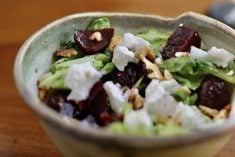When two sets of friends moved recently, I saw signs of grief in their families.
One family had difficulties coping with their young son’s reactions. In the other family, leaving their first home was significant to the young wife. Their experiences led me to do some reading on grief.
The equation change=loss=grief simplified for me what I saw these families experiencing. The moves had produced a change. There was a loss of all things familiar, especially the loss of the young boy’s friends. To him, this was significant and it bothered him immensely.
Read Also

Communication key to bridging generation gap
Each generation is shaped by the predominant forces at play during their formative years. Acknowledging these influences can improve communication among the generations.
I also found it interesting to discover that the impact of grief wasn’t recognized by the psychological community until the 1980s and then it was defined as the normal response to the loss of a loved one by death. The recognition that other life changes can cause grief did not happen until the 1990s. Research is also showing “that significant grief responses which go unresolved, can lead to mental, physical and sociological problems and can contribute to family dysfunction across generations.”
I think this highlights how important it is to acknowledge our feelings when we are experiencing changes in our lives, be they moves, job changes, marriage, children leaving home, retirement, the sale of the family farm or a death. The feelings are real and they need to be shared.
For me this little acronym summarized how an individual can work through the grief.
T = To accept the reality of the loss.
E = Experience the pain of the loss.
A = Adjust to the new environment without the lost object.
R = Reinvest in the new reality.
For the young wife, helping her to accept the reality of the loss and experience the pain of it occurred in a brief moving day discussion we had. I acknowledged her feelings and told her it was OK to shed some tears and feel sad about leaving their home, which held so many happy memories for her. Several weeks later I see her adjusting to her new home and putting energy into settling in.
Sources: The TLC Group, Counseling For Loss and Life Changes, www.counselingforloss.com.
Tortillas
Dear TEAM: I read with interest the column on Mexican food as a new experience in the March 8 Western Producer. I was wondering if you had any simple recipes to make the tortillas with regular wheat flour? – C.K., Eriksdale, Man.
Dear C.K.: Tortillas come in two varieties: corn and wheat. Both varieties are common in Tex-Mex cooking, although corn tortillas are much more traditional in Mexico. Corn tortillas are made from a simple mixture of water and masa harina, a specially treated corn flour. There is usually no fat or oil added.
Tortillas that are made from wheat flour contain baking powder and shortening or lard. They are usually larger and thinner than corn tortillas because the wheat dough can be stretched without crumbling and the baking powder makes them puff up a bit. Both varieties of tortilla are kneaded into a pliable dough, pressed or rolled into thin discs and cooked quickly on a hot iron griddle.
Wheat tortillas
3 cups flour 750 mL
1/2 teaspoon salt 2 mL
1 teaspoon baking powder 5 mL
1/2 cup lard or 125 mL
vegetable shortening
1 cup hot water 250 mL
Mix the flour, salt and baking powder. Using a pastry blender mix in the lard until the mixture resembles small peas. Add the water slowly, mixing until a soft elastic ball forms. Add more or less water as needed. Knead until smooth. Cover with a damp towel and then let rest 15 minutes.
Make seven to nine equal sized balls. Roll each into a flat round disk. Cook on a hot cast iron skillet. No oil is necessary. Flip only once, when the bottom side is golden. The top should be bubbling slightly when ready. Use a spatula to lift the edge and check for doneness before flipping completely. Keep the cooked tortillas warm by covering with a damp towel while you continue to cook.
Whole wheat flour can be substituted for one-quarter to two-thirds of the white flour depending on your personal taste.
Source: http://www.texmextogo.com.
Mixed tortillas
This recipe uses a combination of cornmeal and wheat flour to give a more traditional corn flavour.
11/2 cups all-purpose flour 375 mL
11/2 cups cornmeal 375 mL
2 teaspoons baking powder 10 mL
1 teaspoon salt 5 mL
1 cup warm water (110 F/45 C) 250 mL
In a large bowl, stir together the flour, cornmeal, baking powder and salt. Stir in water to form a crumbly dough. Work dough with your hands until it holds together.
On a floured surface, knead dough until smooth. Divide into 10 to 12 pieces. Roll each into the shape of a ball. Cover lightly with plastic wrap and let rest 10 to 15 minutes.
Flatten each piece of dough by hand, then roll into a nine inch (22 cm) round.
Cook one tortilla at a time on medium heat in a cast iron skillet. When light brown, flip to cook second side. Only flip once. Repeat with remaining tortillas.
Source: http://allrecipes.com.
Avocados
Dear TEAM: I am looking for information about avocados and how to serve them in dishes or alone. I understand they are a healthy veggie to eat. – M.M., Moosomin, Sask.
Dear M.M.: You are correct that avocados are healthy. They are part of the green-yellow fruit and vegetables group. They contain such vital nutrients as vitamin E, which helps mop up free radicals; betasitosterol to maintain healthy cholesterol levels and lutein linked to prostate and eye health. They are also naturally free of cholesterol and sodium.
Avocados are the only fruit that provides monounsaturated fats, known to lower artery-clogging LDL cholesterol and raise heart-healthy HDL cholesterol.
Like other fruits and vegetables, avocados make their eaters feel full because of their water and fibre content. It can be used as part of an effective weight loss plan.
In sandwiches: Avocados can be sliced and added to meat, tomato or cheese sandwiches or mashed and used as an alternative to saturated fat-laden spreads, toppings and dips.
Fresh avocado: Cut the avocado in half lengthwise and separate the two halves. Remove the seed. Pour some olive oil in the cavity with a sprinkling of vinegar, salt and pepper. Eat with a teaspoon. Or simply add Italian salad dressing.
In salads: Research shows that adding full-fat dressing to salad increases carotenoid absorption. Avocados provide heart-healthy monounsaturated fats and omega 3 fatty acids that make them a healthier alternative to many salad dressings.
Avocado and blueberry fruit salad
Yield: six servings.
Dressing:
2 teaspoons honey 10 mL
11/2 teaspoons Dijon mustard 7 mL
1/2 teaspoon ground cinnamon 2 mL
1/4 cup fruit 60 mL
or apple cider vinegar
1/2 cup walnut or canola oil 125 mL
1/8 teaspoon salt 0.5 mL
1/8 teaspoon freshly ground 0.5 mL
black pepper
In a medium bowl, mix honey, mustard and cinnamon together to make a smooth paste. Whisk in vinegar. Add oil in thin stream, whisking constantly until dressing is creamy. Stir in salt and pepper. Taste and adjust seasoning. Dressing yields about 3/4 cup (175 mL).
Salad:
1 large, ripe avocado, peeled,
seeded, cut in slices
1 cup fresh blueberries, 250 mL
rinsed, drained
1 cup fresh apple 250 mL
(peeled, cored, seeded, diced)
1 cup fresh mango diced 250 mL
1 package mixed baby greens 140 g
or 8 cups mixed lettuces
torn in bite sized pieces
1/4 cup chopped chives 60 mL
or green onion
1/4 cup walnuts, toasted, 60 mL
chopped coarsely
Place chopped avocado and fruits in medium bowl, toss with 1/4 cup (60 mL) of dressing and set aside.
Toss salad greens in large bowl with 1/4 cup
(60 mL) of dressing, and distribute evenly on six salad plates. Place an equal portion of dressed fruit-avocado mixture on top of greens. Sprinkle with chopped chives and toasted walnuts to serve. Remainder of salad dressing can be refrigerated for up to two weeks for later use.
To toast walnuts, place nut pieces in dry skillet over medium-high heat and stir occasionally for about seven minutes, or until pieces are browned lightly. Remove from heat. Let nuts cool slightly before chopping and using to garnish salad.
Selecting avocados
The best way to tell if an avocado is ready for immediate use is to gently squeeze the fruit in the palm of your hand. Ripe, ready-to-eat fruit will be firm yet will yield to gentle pressure. Avoid fruit with dark blemishes on the skin or oversoft fruit. Soft ripe fruit can be refrigerated for two or three days.
For more recipes, visit www.avocado.org.
Betty Ann Deobald is a home economist from Rosetown, Sask., and one of four columnists comprising Team Resources. Send correspondence in care of this newspaper, Box 2500, Saskatoon, Sask., S7K 2C4 or contact them at team@producer.com.














